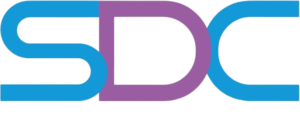SDCE’s Multifibre has been named as the product most in demand by its distributors, thanks to its reliability and consistency throughout 33 years of production. Citing product stability and traceability as the key reasons that SDCE Multifibre is still in such high demand, distributors across the continents agree that the adjacent fabric is still the global leader for textile testing consumables.
“Our customers have absolute trust in this product and its testing results,” says Stefan Veldboer, owner of Vebotech and distributor of SDCE products for Germany and Austria. “The stability of the product is great, and the staining is absolutely reproduceable from batch to batch. That traceabilty and reproducibility is key; SDCE controls that perfectly, and that gives that all-important confidence to the customer.”
Woven in-house at SDCE’s very own weaving operation, each batch of Multifibre is fully-traceable and quality tested in line with ISO 105 F10 standards. The pioneering fabric has come to be favoured by laboratories, manufacturers and testing professionals alike since its launch in 1986, and customer loyalty has grown across both hemispheres and all five continents.
“For the amount of laboratories that we have left in Australia, SDCE Multifibre is proportionately one of our bestsellers,” says Carl Ellul, director at WMC Jackson and distributor for Australia, New Zealand and the Pacific Island States. “When customers are onto a good thing, they won’t change it; SDCE Multifibre has a long history with Australian customers, and they have come to rely on its performance and the assurance that they will keep on getting the correct result.”
Hand-in-hand with consistency however is evolution, and the addition of variations of components has been welcomed by Multifibre customers worldwide.
“SDCE Multifibre is considered to be the best in the market because it is always of good quality,” says Valerie Mazenc, sales manager at Adsol, and SDCE distributor for France. “The Multifibre DW – and the pre-cut pieces in particular – are the most popular, but it is an advantage to us to be able to offer different customers the choice of different fibres in accordance with their needs.”
SDCE expanded its stable of Multifibre fabrics in 2013 and again in 2014 with the introduction of Multifibre LyoW® and Multifibre SLW respectively. Following feedback from retail giant M&S that the acetate component of Multifibre DW was no longer commercially relevant for general apparel, SDCE responded with the launch of Multifibre LyoW®, which features a component of regenerated cellulose in place of acetate. The new component accurately predicts the staining performance of Lyocell, Modal, Viscose and their blends and, although originally developed exclusively for M&S, the variation was later opened up to the global market and welcomed by retailers and manufacturers alike.
Multifibre SLW meanwhile features an additional silk component, which is of particular interest to testing professionals in the intimate apparel sector.
“The ongoing development of Multifibre proves to customers that we are close to the market,” says Stefan Veldboer. “Acknowledging that acetate is not as prevalent as it once was and launching new variations that better meet the expectations of customers shows that we are a contemporary supplier of testing consumables, as well as being the longest-standing when it comes to experience and heritage.”
As the industry moves into a new year, demand for SDCE Multifibre is as consistent as ever. Supported by the assurance of a security thread sewn into each and every batch, and backed up by certificates of conformity, SDCE Multifibre continues to be the product trusted by professionals for their ongoing investment in quality.

